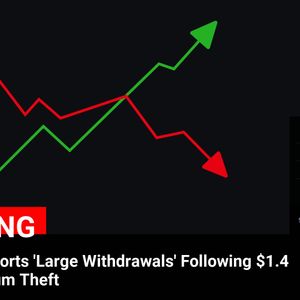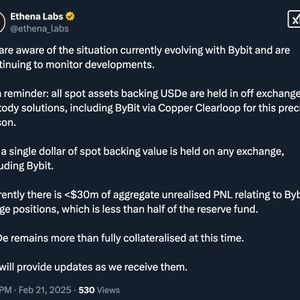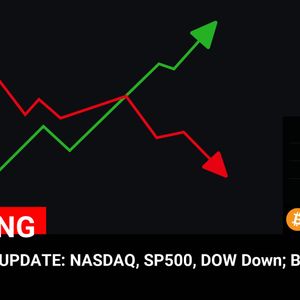Buckle up, crypto traders and Forex enthusiasts! The Reserve Bank of New Zealand (RBNZ) just dropped a major announcement that’s sending ripples across the financial markets – a RBNZ interest rate cut of 50 basis points, bringing the Official Cash Rate (OCR) down to 3.75%. While anticipated by many, this move signals significant shifts in New Zealand’s economic policy and is already impacting the New Zealand Dollar (NZD), particularly against the US Dollar (USD). Let’s dive into what this interest rate decision means for the Forex landscape and what you need to watch out for. Decoding the RBNZ’s Interest Rate Decision: Why Now? The RBNZ’s decision to slash interest rates by 50 bps wasn’t a bolt from the blue. Here’s a breakdown of the key factors driving this move, as outlined in their Monetary Policy Statement : Subdued Economic Activity: The New Zealand economy is experiencing a period of slowdown. The RBNZ projects a recovery in 2025, but current conditions are far from robust. Inflation within Target: Consumer Price Inflation (CPI) is currently near the midpoint of the RBNZ’s 1-3% target band. This gives the central bank breathing room to act proactively without immediate inflation fears. Future Inflationary Shocks Preparedness: By bringing inflation closer to the middle of the target range, the RBNZ believes it’s better positioned to respond effectively to potential future inflationary pressures. Global Economic Risks: The statement highlights concerns about increased trade barriers and broader geoeconomic fragmentation, posing risks to New Zealand’s economic outlook. Faster Pace of Rate Cuts: The RBNZ indicated they are prepared to lower the OCR at a faster pace than previously projected, demonstrating a proactive approach to stimulate the economy. Key Takeaways from the Monetary Policy Statement The RBNZ’s Monetary Policy Statement provides crucial insights into their current economic assessment and future policy direction. Here are the highlights: Forecast March 2026 (Previous) March 2026 (Updated) June 2025 (Previous) June 2025 (Updated) Official Cash Rate (OCR) 3.43% 3.1% 3.83% 3.45% TWI NZD 69.5% 67.5% – – Annual CPI (March 2026) 2.3% 2.2% – – These updated forecasts signal a more dovish stance from the RBNZ, anticipating lower interest rates and a slightly weaker New Zealand Dollar in the coming years. The revision in OCR projections suggests the central bank is ready to maintain lower rates for an extended period to support economic recovery. NZD/USD Reaction: What’s Happening in the Forex Market? As expected, the New Zealand Dollar experienced immediate selling pressure following the RBNZ interest rate cut announcement. The NZD/USD pair took a noticeable dip, currently trading around 0.5680, marking a 0.42% decrease for the day. Here’s a snapshot of the New Zealand Dollar performance against major currencies today: Currency USD EUR GBP CAD AUD JPY CHF NZD Change (%) -0.40% -0.30% -0.26% -0.36% -0.29% -0.37% -0.29% As you can see, the New Zealand Dollar is currently the weakest among major currencies, particularly against the US Dollar. This highlights the immediate impact of the interest rate decision on currency valuations. Trading the Kiwi: Key Levels and Technical Outlook for NZD/USD For traders watching the NZD/USD pair, understanding key technical levels is crucial. According to Bitcoin World’s Senior Analyst, Dhwani Mehta: Immediate Resistance: The 21-day Simple Moving Average (SMA) at 0.5814 is the initial resistance level. Breaching this could lead to further upside towards 0.5930 and potentially the psychological level of 0.6000. Strong Support: A confluence of support lies around 0.5660, where the 21-day and 50-day SMAs converge. Failing to hold this level could open the door for a deeper correction towards the February 3 low of 0.5516. Bullish Indicators: Despite the current downturn, a Bull Cross on the daily chart and the Relative Strength Index (RSI) remaining above 50 suggest underlying bullish momentum for NZD/USD . Traders should closely monitor these levels and price action to gauge potential trading opportunities in the wake of the RBNZ interest rate cut . Navigating the New Zealand Dollar: Key Influencing Factors Understanding what moves the New Zealand Dollar is essential for informed trading and investment decisions. Here are the primary drivers: New Zealand Economic Health: GDP growth, employment figures, and overall economic indicators are fundamental drivers. A strong economy typically supports a stronger NZD. RBNZ Policy: As demonstrated today, interest rate decisions and forward guidance from the RBNZ have a direct and significant impact on the NZD. Chinese Economy: China’s economic performance is a major factor due to New Zealand’s strong trade ties with China. Chinese economic slowdowns can negatively impact the NZD. Dairy Prices: Dairy exports are a cornerstone of the New Zealand economy. Fluctuations in global dairy prices directly affect New Zealand’s export income and, consequently, the NZD. Global Risk Sentiment: The NZD is often considered a ‘risk-on’ currency. It tends to strengthen during periods of global economic optimism and weaken during times of uncertainty and risk aversion. Looking Ahead: What’s Next for the Kiwi? The RBNZ’s dovish stance and willingness to consider further rate cuts in 2025 suggest continued pressure on the New Zealand Dollar . However, as always, the Forex market is dynamic. Traders should keep a close eye on upcoming economic data releases from New Zealand, global risk sentiment, and any further communications from the RBNZ to anticipate future movements in NZD/USD and other NZD pairs. In conclusion, the RBNZ interest rate cut , while widely expected, marks a significant shift in New Zealand’s monetary policy. The immediate reaction in the New Zealand Dollar , particularly the NZD/USD pair, underscores the importance of central bank decisions in Forex trading. Stay informed, analyze the data, and trade wisely! To learn more about the latest Forex market trends, explore our article on key developments shaping US Dollar liquidity.



















